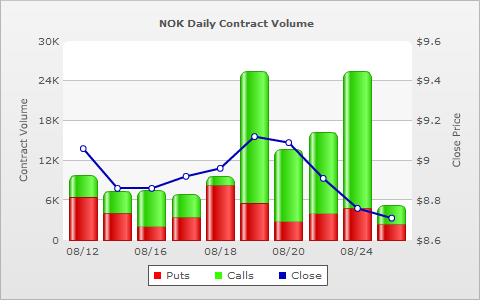Stimulate Your Skills With Simulated Trading_1
Post on: 22 Июль, 2015 No Comment

Think you can beat the Street? Do you know which way the market is going to move? Have you spotted a company that you just know is going to go through the roof? Got a gut feeling on a hot initial public offering (IPO)? Wish you could test your theories without risking your hard-earned money? You can! Welcome to the world of stock market simulators.
Practice Your Skills
Stock market simulators are online tools that enable investors to practice their stock-picking skills without actually investing any money. Investors log on, set up an account, and are given a predetermined amount of simulated money with which to can make simulated investments. (Check out Investopedia’s Stock Simulator .)
Simulators can support equity trading, option trading, limit / stop orders. margin. short selling and adjust for most corporate actions ( splits , dividends , mergers , etc), allowing investors to test virtually any trading strategy without risk.
It also provides an opportunity to practice conducting research. Simulators generally offer a host of tools, including historical prices, performance charts, price-earnings ratios for specific securities, as well as historical trading data for various industries and indexes.
Expert Investors Take Note
Stock market simulators can also be valuable tools for more experienced investors. Simulators give advanced users the opportunity to test complex trading strategies in a safe environment. Following the results of a simulated trading strategy provides an opportunity to study the results over time, to refine the technique and to track the results before testing it in the real world. Research tools enable investors to monitor IPOs, track trading volumes and conduct customized screens based on technical and fundamental criteria. (To read more on these strategies, see Getting To Know Stock Screeners and How Investors Can Screen For Stock Ideas .)
Tap Into Real Resources
The tools built into any given simulator are just the tip of the iceberg. There’s no reason to limit yourself to those resources when there are so many other tools available. From listening to tips from your broker to subscribing to newsletters written by stock-picking gurus, simulators let you choose from any resources that you can dream up, just as you would if you were buying from a broker or through an online trading account.
Regardless of the resources you use or the trading strategy that you employ, simulators give you the chance to construct a portfolio and find out whether your research correctly identifies winners or losers. Of course, simulators also provide an opportunity to learn something about yourself. Watching the value of your simulated portfolio rise and fall gives you a sense of whether you would be comfortable with watching the balance in your portfolio decline when the markets drop. It also helps you figure out at what point you would cut your losses and sell as well as what point you would take your winnings off of the table. (For more on this topic, see Personalizing Risk Tolerance .)
Learn From Others
Schools often base lesson plans on stock market simulator sessions to give students an introduction to the stock market and help them gain insight into the economic factors that shape the direction of market movements. Newspapers and online venues often run stock market simulation competitions that not only teach investors about the markets, but also give them an opportunity to win real money. These competitions provide a great way to pit your strategies and skills against other investors in an arena where the winner is rewarded. Even if you don’t find your name at the top of the leader board at the end of the competition, you still get a chance to see what the winner bought and learn about his or her trading strategy. (To see some common mistakes to avoid, read Learning From Others’ Mistakes .)

The Limits of Simulation
There is no doubt that simulators are good tools, but there’s just no way to fully replicate the real thing. Even the best simulators offer fewer securities and more restricted trading parameters than the actual global financial markets.
For example, a simulator may not provide the ability to trade foreign stocks or stocks under a certain price — this usually means no penny stocks. There is often a time delay in the data feeds of simulators, which means that your trade won’t be executed immediately but after the time delay. For example, Investopedia’s Simulator has a 15-minute time delay. By contrast, most real market trades are immediate.
In addition, playing the markets online just isn’t the same as putting your own money on the line. Simulated trading is an easier game to play — and one in which mistakes are easily forgotten. It is much easier to invest $10,000 in simulator money in a high-risk biotech stock than to invest in that same stock with your hard-earned cash.
For example, suppose the stock pick is wrong. In a simulator, you can simply reflect on the trade with no money loss, while a poor decision in a real money trade could put your finances into a tailspin.
Start Trading Today
If you keep the limits of stock simulators in mind, they are a great way to test the waters and teach yourself how to be a profitable stock picker. (If you are ready to trade, check out the Investopedia Stock Simulator .)














